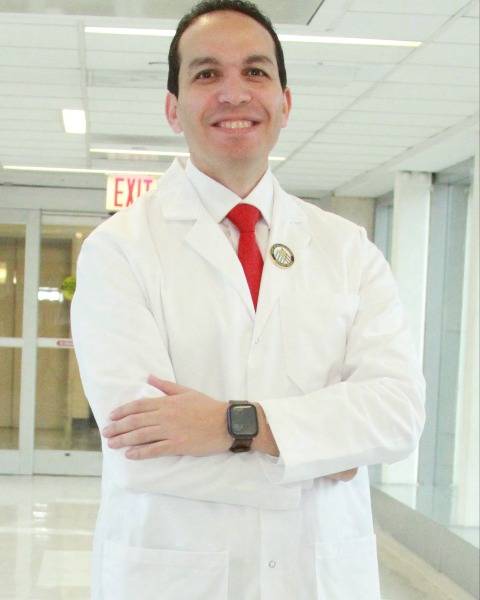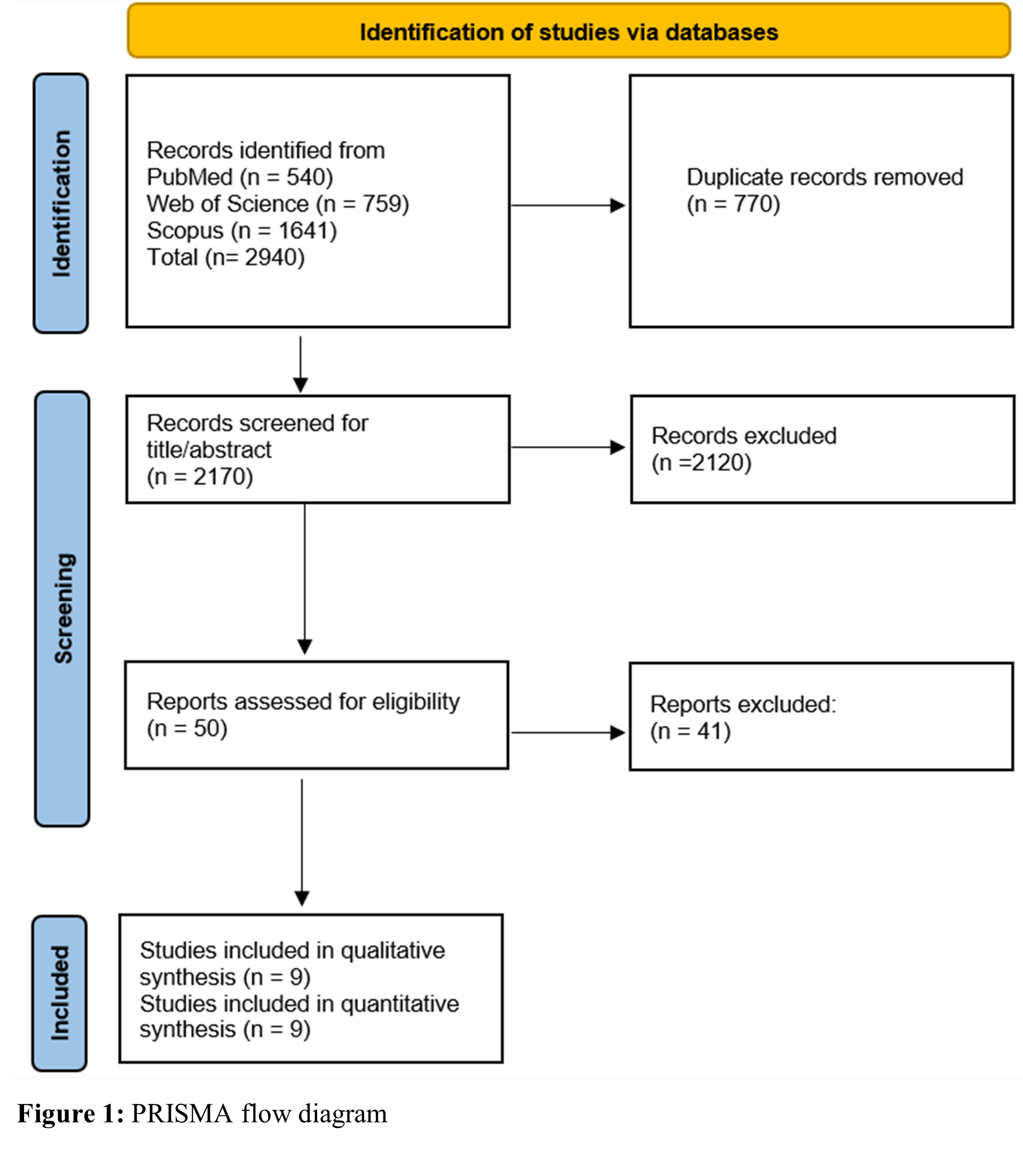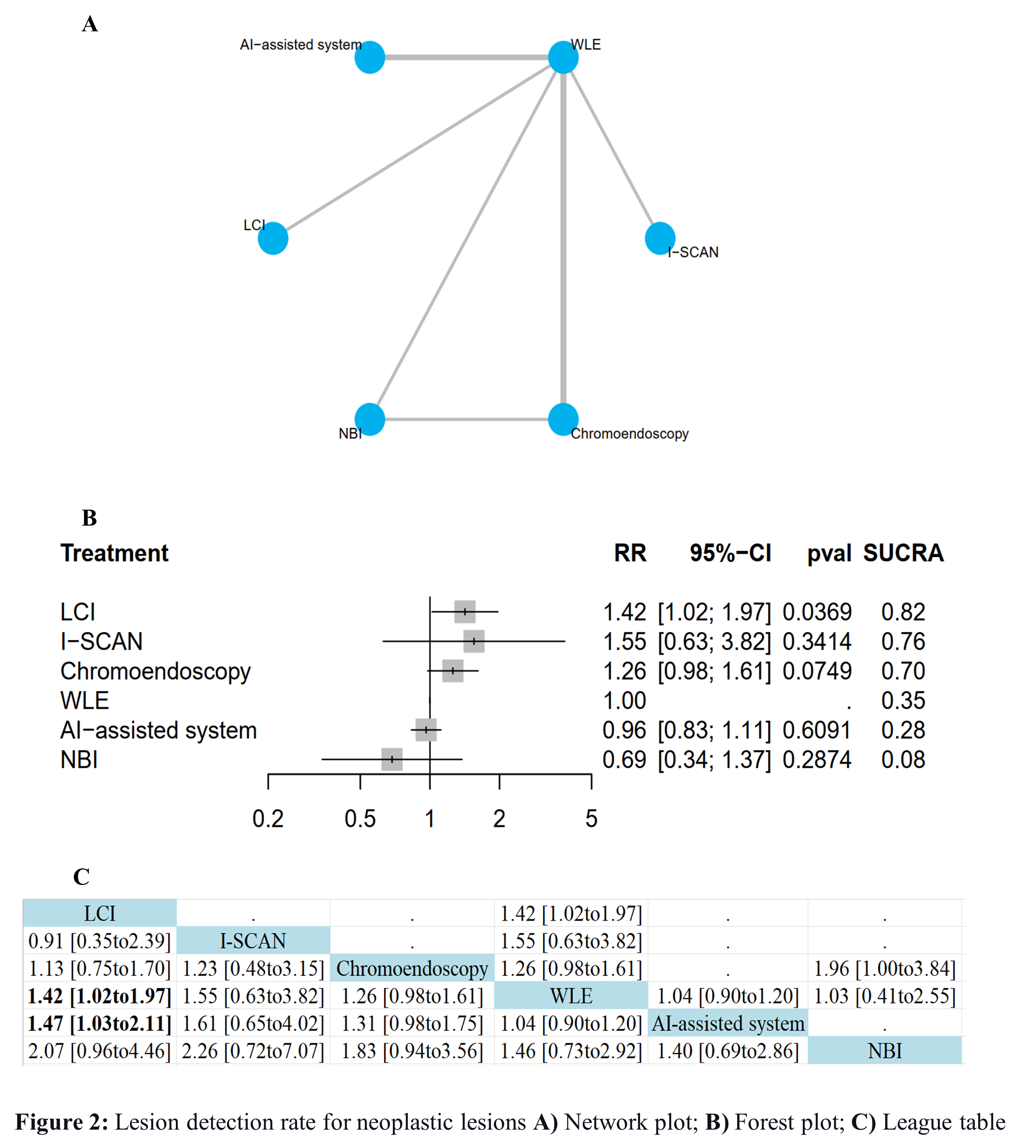Tuesday Poster Session
Category: Colorectal Cancer Prevention
P4793 - Optimizing Surveillance in Lynch Syndrome: Lesion Detection and Comparative Performance of Different Colonoscopy Modalities - A Systematic Review and Network Meta-Analysis
Tuesday, October 28, 2025
10:30 AM - 4:00 PM PDT
Location: Exhibit Hall

Hazem Abosheaishaa, MD
Mount Sinai West, Icahn School of Medicine at Mount Sinai
Queens, NY
Presenting Author(s)
George Hanen, MBBCh1, Hazem Eslam, MBBCh2, Mohamed Nasser, MBBCh3, Mohamed E. Haseeb, MBBCh4, Hatem Yaser, MBBCh5, Shehab Yaser, MBBCh5, Salma Allam, 6, Ahmed N.. Mohamed, MD7, Nermin Elhossiny, 8, Hazem Abosheaishaa, MD9
1School of medicine, Minya University, Samalout, Al Minya, Egypt; 2Faculty of Medicine, Assiut university, Assiut, Egypt, Assiut, Asyut, Egypt; 3faculty of medicine, minia university, ElMinia, Al Minya, Egypt; 4Minia University, Minia, Al Minya, Egypt; 5Faculty of Medicine, Assiut University, Assiut, Egypt, Assiut, Asyut, Egypt; 6Galala University, Suez, As Suways, Egypt; 7Cleveland Clinic Foundation, South Euclid, OH; 8St Mary General hospital prime healthcare , NJ , USA, Passaic, NJ; 9Mount Sinai West, Icahn School of Medicine at Mount Sinai, Queens, NY
Introduction: Lynch syndrome patients are at a high risk for developing colorectal cancer; thus, optimal surveillance strategies are required. Although colonoscopic imaging methods differ in diagnostic performance, direct comparisons in this population are not very common. We aimed to evaluate the diagnostic yield and clinical utility of white-light endoscopy (WLE), chromoendoscopy, virtual chromoendoscopy (NBI: narrow band imaging, LCI: linked color imaging, I-SCAN), and AI-assisted colonoscopy in detecting neoplastic and non-neoplastic lesions in individuals diagnosed with Lynch syndrome.
Methods: Up until March 2025, PubMed, WOS, and Scopus were searched. Relevant studies included observational or interventional designs that contrasted various forms of colonoscopy in adults with Lynch syndrome were included. The primary outcomes were lesion detection rate and number of lesions per colonoscopy. Secondary outcomes included total procedure time and withdrawal time. Credibility of the evidence was assessed employing CINeMA.
Results: Nine studies were included. LCI demonstrated a significantly higher neoplastic lesion detection rate compared to WLE (RR = 1.42, 95% CI: 1.02–1.97) and detected more lesions per procedure (MD = 0.23, 95% CI: 0.01–0.45). Chromoendoscopy was better at marking the non-neoplastic lesions (RR = 1.23, 95% CI: 1.05–1.44) but had the longest procedure and withdrawal times. AI-assisted, as well as virtual ones, were better than WLE but were not as effective as LCI or chromoendoscopy.
Discussion: In terms of efficiency, LCI outperforms WLE in detecting neoplastic lesions in Lynch syndrome. Chromoendoscopy remains valuable for non-neoplastic detection, but its longer procedural time is a significant limitation. AI-assisted technologies show promise in enhancing detection, though further studies are needed to validate their effectiveness.

Figure: PRISMA Flow chart

Figure: : Lesion detection rate for neoplastic lesions A) Network plot; B) Forest plot; C) League table
Disclosures:
George Hanen indicated no relevant financial relationships.
Hazem Eslam indicated no relevant financial relationships.
Mohamed Nasser indicated no relevant financial relationships.
Mohamed E. Haseeb indicated no relevant financial relationships.
Hatem Yaser indicated no relevant financial relationships.
Shehab Yaser indicated no relevant financial relationships.
Salma Allam indicated no relevant financial relationships.
Ahmed Mohamed indicated no relevant financial relationships.
Nermin Elhossiny indicated no relevant financial relationships.
Hazem Abosheaishaa indicated no relevant financial relationships.
George Hanen, MBBCh1, Hazem Eslam, MBBCh2, Mohamed Nasser, MBBCh3, Mohamed E. Haseeb, MBBCh4, Hatem Yaser, MBBCh5, Shehab Yaser, MBBCh5, Salma Allam, 6, Ahmed N.. Mohamed, MD7, Nermin Elhossiny, 8, Hazem Abosheaishaa, MD9. P4793 - Optimizing Surveillance in Lynch Syndrome: Lesion Detection and Comparative Performance of Different Colonoscopy Modalities - A Systematic Review and Network Meta-Analysis, ACG 2025 Annual Scientific Meeting Abstracts. Phoenix, AZ: American College of Gastroenterology.
1School of medicine, Minya University, Samalout, Al Minya, Egypt; 2Faculty of Medicine, Assiut university, Assiut, Egypt, Assiut, Asyut, Egypt; 3faculty of medicine, minia university, ElMinia, Al Minya, Egypt; 4Minia University, Minia, Al Minya, Egypt; 5Faculty of Medicine, Assiut University, Assiut, Egypt, Assiut, Asyut, Egypt; 6Galala University, Suez, As Suways, Egypt; 7Cleveland Clinic Foundation, South Euclid, OH; 8St Mary General hospital prime healthcare , NJ , USA, Passaic, NJ; 9Mount Sinai West, Icahn School of Medicine at Mount Sinai, Queens, NY
Introduction: Lynch syndrome patients are at a high risk for developing colorectal cancer; thus, optimal surveillance strategies are required. Although colonoscopic imaging methods differ in diagnostic performance, direct comparisons in this population are not very common. We aimed to evaluate the diagnostic yield and clinical utility of white-light endoscopy (WLE), chromoendoscopy, virtual chromoendoscopy (NBI: narrow band imaging, LCI: linked color imaging, I-SCAN), and AI-assisted colonoscopy in detecting neoplastic and non-neoplastic lesions in individuals diagnosed with Lynch syndrome.
Methods: Up until March 2025, PubMed, WOS, and Scopus were searched. Relevant studies included observational or interventional designs that contrasted various forms of colonoscopy in adults with Lynch syndrome were included. The primary outcomes were lesion detection rate and number of lesions per colonoscopy. Secondary outcomes included total procedure time and withdrawal time. Credibility of the evidence was assessed employing CINeMA.
Results: Nine studies were included. LCI demonstrated a significantly higher neoplastic lesion detection rate compared to WLE (RR = 1.42, 95% CI: 1.02–1.97) and detected more lesions per procedure (MD = 0.23, 95% CI: 0.01–0.45). Chromoendoscopy was better at marking the non-neoplastic lesions (RR = 1.23, 95% CI: 1.05–1.44) but had the longest procedure and withdrawal times. AI-assisted, as well as virtual ones, were better than WLE but were not as effective as LCI or chromoendoscopy.
Discussion: In terms of efficiency, LCI outperforms WLE in detecting neoplastic lesions in Lynch syndrome. Chromoendoscopy remains valuable for non-neoplastic detection, but its longer procedural time is a significant limitation. AI-assisted technologies show promise in enhancing detection, though further studies are needed to validate their effectiveness.

Figure: PRISMA Flow chart

Figure: : Lesion detection rate for neoplastic lesions A) Network plot; B) Forest plot; C) League table
Disclosures:
George Hanen indicated no relevant financial relationships.
Hazem Eslam indicated no relevant financial relationships.
Mohamed Nasser indicated no relevant financial relationships.
Mohamed E. Haseeb indicated no relevant financial relationships.
Hatem Yaser indicated no relevant financial relationships.
Shehab Yaser indicated no relevant financial relationships.
Salma Allam indicated no relevant financial relationships.
Ahmed Mohamed indicated no relevant financial relationships.
Nermin Elhossiny indicated no relevant financial relationships.
Hazem Abosheaishaa indicated no relevant financial relationships.
George Hanen, MBBCh1, Hazem Eslam, MBBCh2, Mohamed Nasser, MBBCh3, Mohamed E. Haseeb, MBBCh4, Hatem Yaser, MBBCh5, Shehab Yaser, MBBCh5, Salma Allam, 6, Ahmed N.. Mohamed, MD7, Nermin Elhossiny, 8, Hazem Abosheaishaa, MD9. P4793 - Optimizing Surveillance in Lynch Syndrome: Lesion Detection and Comparative Performance of Different Colonoscopy Modalities - A Systematic Review and Network Meta-Analysis, ACG 2025 Annual Scientific Meeting Abstracts. Phoenix, AZ: American College of Gastroenterology.
